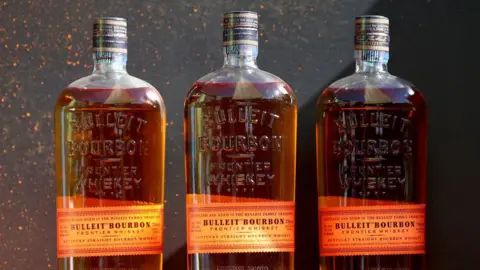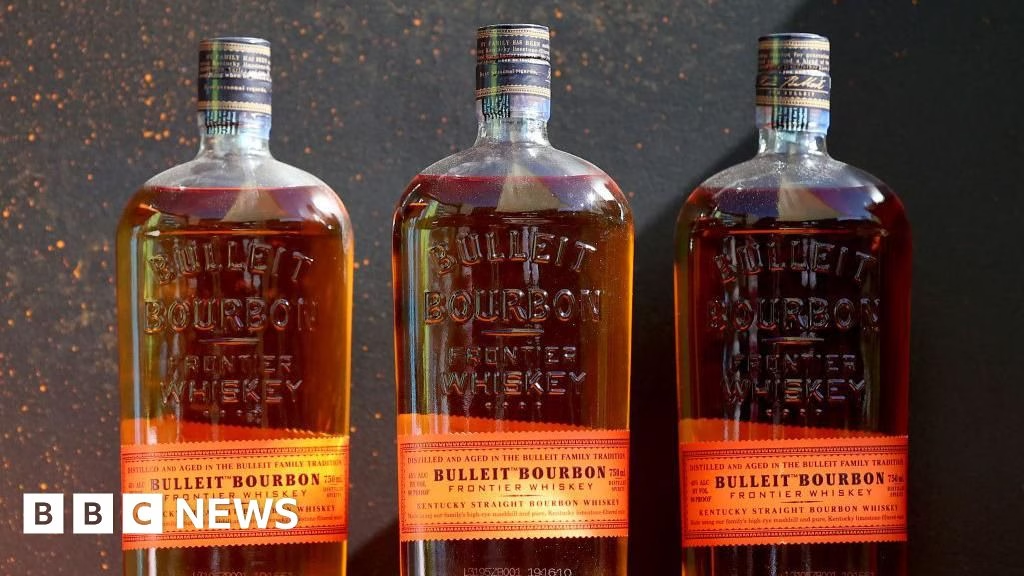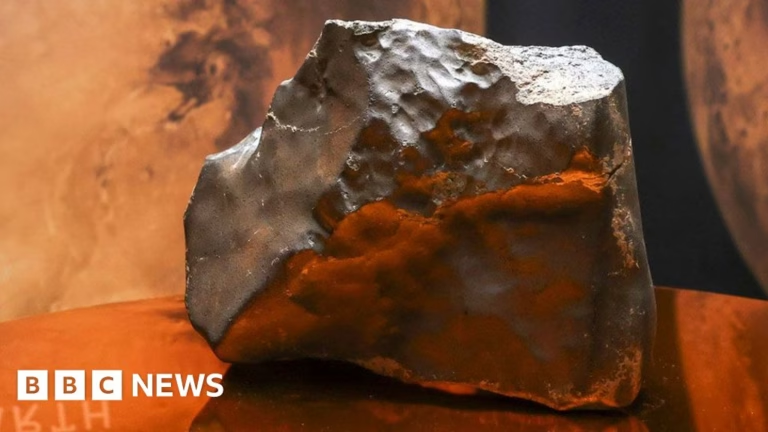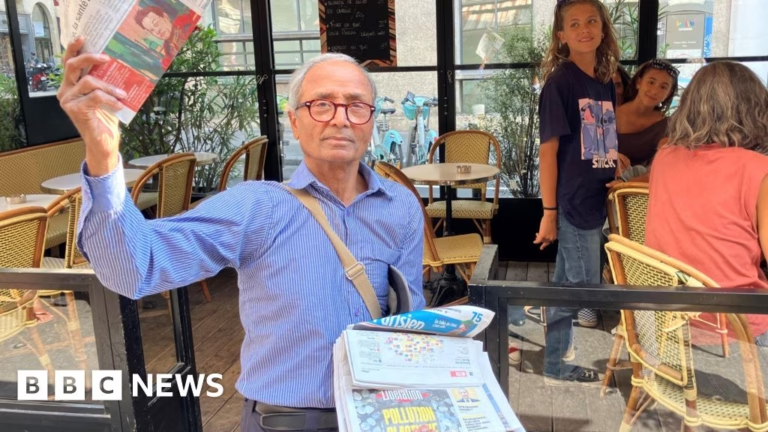
Getty Images
As American as apple pie, Kentucky bourbon was booming after the last Great Recession ended. But as the economy has waned post-Pandemic – and with multiple trade wars on the horizon – the market may be drying up.
Although the whiskey, which is traditionally made with corn and aged in charred oak barrels, has roots going all the way back to the 18th century, it wasn’t until 1964 that it became an iconic piece of Americana, when Congress passed a law declaring it a “distinctive product of the United States”.
But drinking trends come and go, and by the end of the 20th century, bourbon was considered a bit old fashioned – pun intended.
“You often see these kind of generational shifts where people don’t want to drink what their parents drink,” said Marten Lodewijks, the US president of IWSR, which collects alcoholic beverage data and provides industry analysis.
Then, as the world recovered from the 2008 recession, drinkers seemed to rediscover this classic spirit, for a few different reasons.
For starters, the price point was good, which made it attractive for bar managers to purchase and incorporate into cocktails and for younger drinkers to sample. Then, in 2013, a law was passed in Kentucky that made it easier for companies to purchase and resell vintage bottles, opening up a high-end collectible market. Add to that the rise in mid-century nostalgia fuelled by shows like Mad Men, and bourbon was due for a full-blown Renaissance.
Sales of bourbon grew by 7% worldwide between 2011-2020, which is more than three times the growth of the decade prior, according to industry data company ISWR.
Soon, some bourbon distillers were becoming quasi-celebrities, and people were starting to buy up bourbon bottles not to drink, but as an investment.
“Everyone was going crazy over the bourbon market, and treating like a commodity, like a stock,” recalls Robin Wynne, a general manager and beverage director for Little Sister in Toronto, Canada, who has been a bar manager for about 25 years.
“People would go in as a prospector, to flip bottles for two to three times the value.”
But like most market bubbles, this one was bound to burst. The pandemic’s lockdowns tanked bar sales, and inflation has made many would-be bourbon drinkers choose less expensive options – or forgo drinking all together. Amongst Gen-Z, many 20-somethings are drinking less than their older siblings and parents did at their age.
Those factors have contributed to declining alcohol sales, with bourbon sales specifically slowing down to just 2% between 2021-2024, according to ISWR data.
President Donald Trump’s global tariffs have been the final straw. The EU has announced retaliatory tariffs against US goods, including Kentucky bourbon and Californian wine, although implementation has been delayed for six months.
Meanwhile, most provinces in Canada have stopped importing American alcoholic beverages in retaliation. The country accounts for about 10% of Kentucky’s $9bn (£6.7bn) whiskey and bourbon business.
“That’s worse than a tariff, because it’s literally taking your sales away, completely removing our products from the shelves … that’s a very disproportionate response,” Lawson Whiting, the CEO of Brown-Forman, which produces Jack Daniels, Woodford Reserve and Old Forester, said back in March when Canadian provinces announced their plan to stop buying US booze.
Trump has said that tariffs will boost made-in-American businesses.
But Republican Senator Rand Paul, who represents Kentucky, said the tariffs will hurt local businesses and consumers in his home state.
“Well, tariffs are taxes, and when you put a tax on a business, it’s always passed through as a cost. So, there will be higher prices,” he told ABC’s “This Week” in May.
/live(460b1450-74b1-11f0-b0db-0dffb4fc96e3).webp)
Getty Images
These economic pressures have created a growing list of casualties.
Liquor giant Diageo, reported that sales of Bulleit, a Kentucky distillery that makes bourbon, rye and whiskey, where down 7.3% this fiscal year.
Wild Turkey – a Kentucky bourbon owned by Campari – sales were down 8.1% over the past six months.
While big, international brands will likely be able to weather the storm, the sales hit has led to a growing list of casualties.
In July, LMD Holdings filed for Chapter 11 bankruptcy – just one month after opening the Luca Mariano Distillery in Danville, Kentucky.
This spring, Garrard County Distilling went into receivership.
And in January, Jack Daniel’s parent company closed a barrel-making plant in Kentucky.
The bottom of the barrel has not yet been reached, warned Mr Lodewijks.
“I’d be extraordinarily surprised if there weren’t more bankruptcies and more consolidation,” he said.
In part, bourbon has become a victim of its own success – the rise in bourbon sales, and the growth of the premium market, helped fuel many small distilleries. Because bourbon must age in barrels for years, what’s on the market today was predicted a few years ago, which means that there is currently an oversupply, which is driving down prices.
But while these economic conditions are harsh, Mr Lodewijks said that history has shown how tough times can create innovation. Scotch whiskey used to be fairly simple, a blend of middle-of-the road tipples. But when sales declined in the second part of the 20th centuries, distillers started aging their excess bottles, which helped create the market we have now for premium, aged Scotch whiskey.
In Canada, where bourbon imports have slowed to a trickle, local distilleries have started experimenting with bourbon-making methods to give Canadian whiskey a similar taste.
“The tariff war has really done a positive for the Canadian spirits business,” noted Mr Wynne.
“We’ve got lots of grains to make these whiskeys without having to rely on the States.”
Source: https://www.bbc.com/news/articles/ckglnk6yxlko?at_medium=RSS&at_campaign=rss









